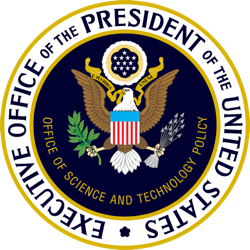
| The Science of Digital Fabrication |
| March 7, 2013 |
| MIT |

In 1948 Claude Shannon created a mathematical theory of communication, showing that by dividing a continuous message into discrete symbols it can be sent reliably through an unreliable communications channel. In 1952 John von Neumann applied this to computing, showing that a digital computer can operate reliably with unreliable devices. The same is now happening for fabrication, with the introduction of fundamentally digital processes that can build reliably with unreliable materials by coding their construction from discrete components. These are being developed on length scales from molecules to buildings, promising unprecedented manufacturing flexibility, functionality, complexity, and reusability.
This workshop will review the research required to turn data into things and things into data, gathering an emerging interdisciplinary community to provide input to guide policy and programs in this area. It is open but requires registration based on available space; to register send your name and any institutional affiliation you'd like to include to <meetings@cba.mit.edu>

pictures
9:00-10:30 Briefings: Materials and Mechanisms (E14-674)
History: Saul Griffith
Fabricational Complexity: Joe Jacobson
Digital Materials: Kenny Cheung
Self-Assembly: Ned Seeman
Nano-assembly: Peng Yin
Micro-assembly: Will Langford
Meso-assembly: Hod Lipson
Macro-assembly: Skylar Tibbits
Mega-assembly: Larry Sass
10:30-11:00 Break (E14-638)
11:00-12:30 Briefings: Processes and Workflows (E14-674)
3D Scanning: Philip Withers
Design Representations and Interfaces: Matthew Keeter
Path Planning: Sanjay Sarma
Motion Control: Nadya Peek
Printing: Jennifer Lewis
Folding: Erik Demaine
Programmable Matter: Daniela Rus
Little Data: George Church
Self-Reproducing Systems: John Glass
12:30-2:00 Lunch: Demonstrations (E14-638,648)
2:00-3:30 Briefings: Policy and Programs (E14-674)
NIST: John Slotwinski
DARPA: Paul Eremenko
NSF: Richard Voyles
NASA: LaNetra Tate
DOE: Kelly Visconti
DHS: Jose Vazquez
Make: Dale Dougherty
MacArthur Foundation: Connie Yowell
Barcelona: Vicente Guallart
Rep. Bill Foster
3:30-4:15 Working Groups (E14-638,648)
Standards, Formats: Hod Lipson
Facilities, Infrastructure: Jim Newton
Communication, Publication: Joe Jacobson
Education, Outreach: Sherry Lassiter
4:30-5:00 Discussion (E14-674)
5:00-6:30 Reception: Exhibition (E14-638,648)
6:30-8:00 Goldstein Lecture (10-250)